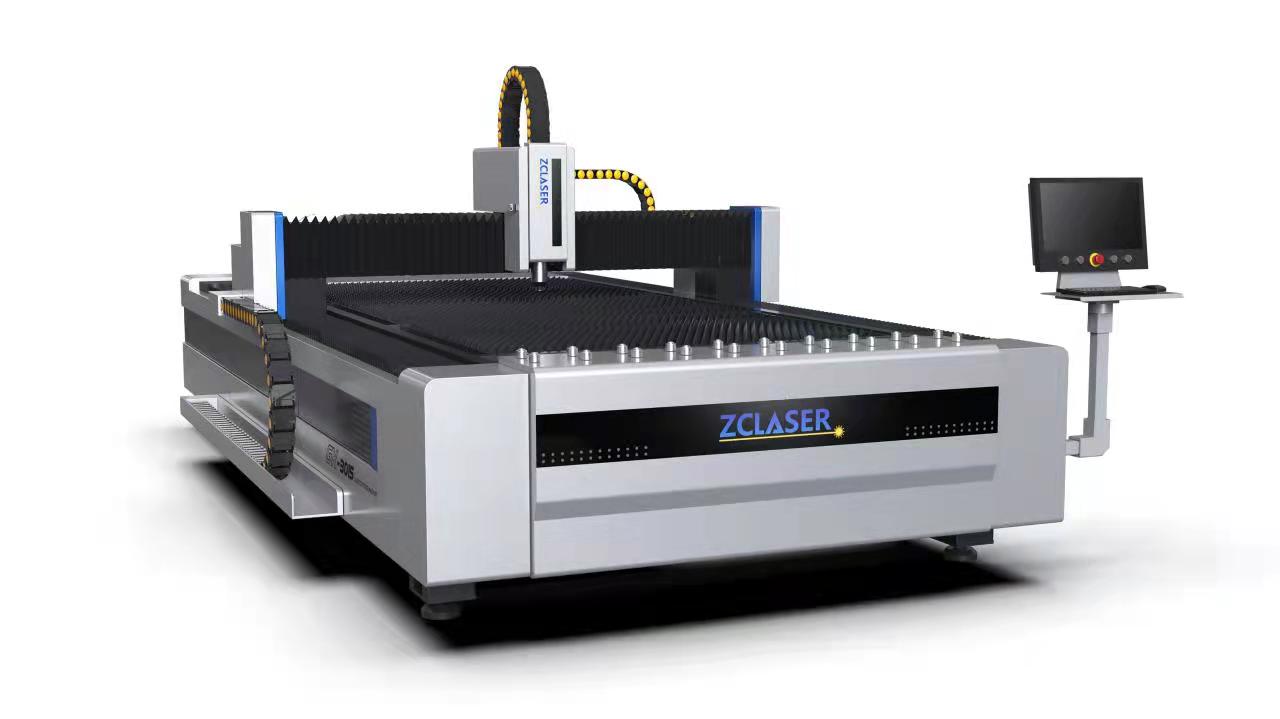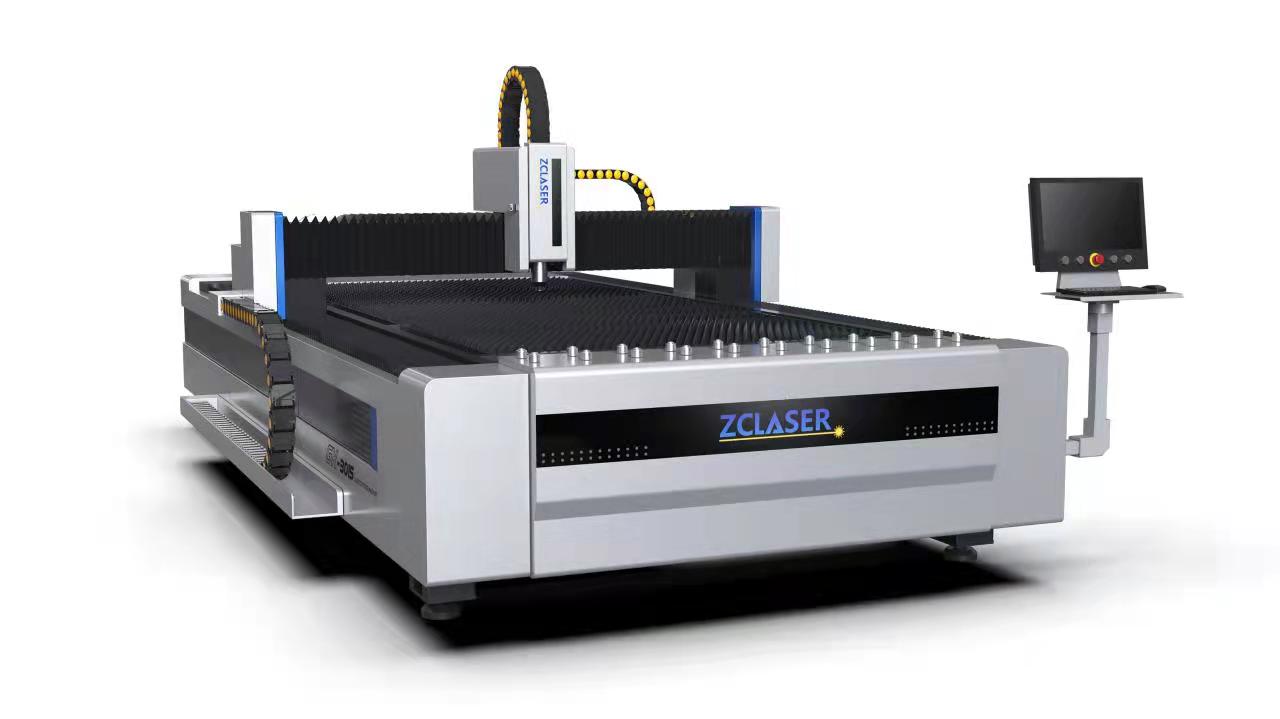Just like its name, CO₂ lasers use a carbon dioxide-based gas mixture. This gas, usually a mixture of CO₂, nitrogen and helium, is electrically excited to generate the laser beam. Solid-state lasers are classified as fiber lasers or disk lasers and have a power range similar to that of CO₂ lasers. Like the CO₂ laser, the eponymous component describes the laser active medium, in this case a solid glass or crystal in the shape of a fiber or disk.
On CO₂ lasers, the laser beam is guided through the optical path by optics, while with fiber lasers, the beam is generated in an activated fiber and guided through a conducting fiber to the machine’s cutting head. Aside from the difference in the laser medium, the other most important difference is the wavelength: fiber lasers have a wavelength of 1µm, while CO₂ lasers have a wavelength of 10µm. Fiber lasers have shorter wavelengths and therefore higher absorption rates when cutting steel, stainless steel, and aluminum. Better absorption means less heating of the material being processed, which is a big advantage.
CO₂ technology is widely applicable to the processing of different kinds of materials and different plate thicknesses. Fiber laser cutting equipment is suitable for processing thin to thick sheets of steel, stainless steel, aluminium and non-ferrous metals (copper and brass).
Post time: Mar-21-2022

